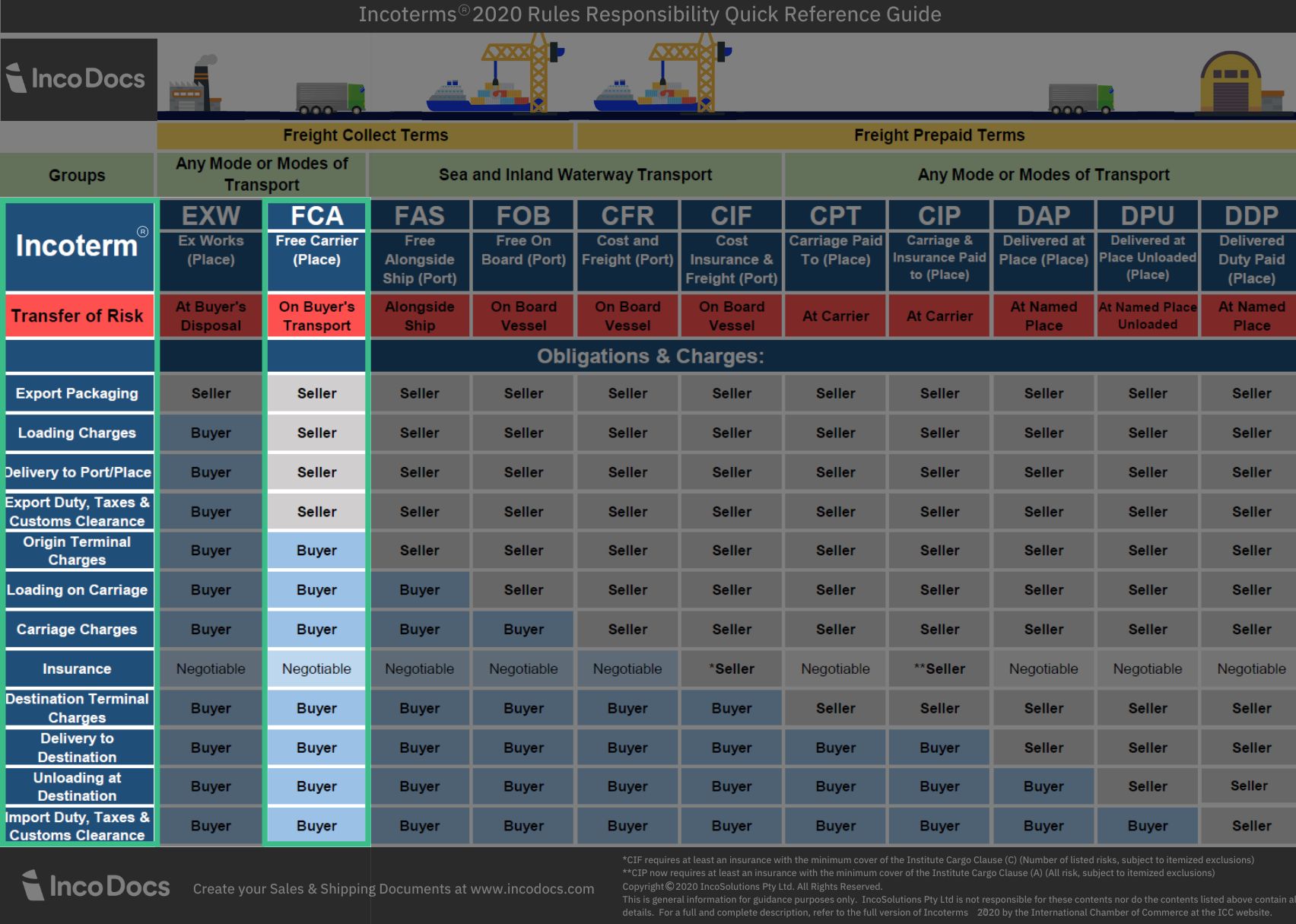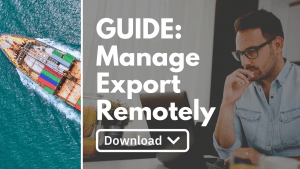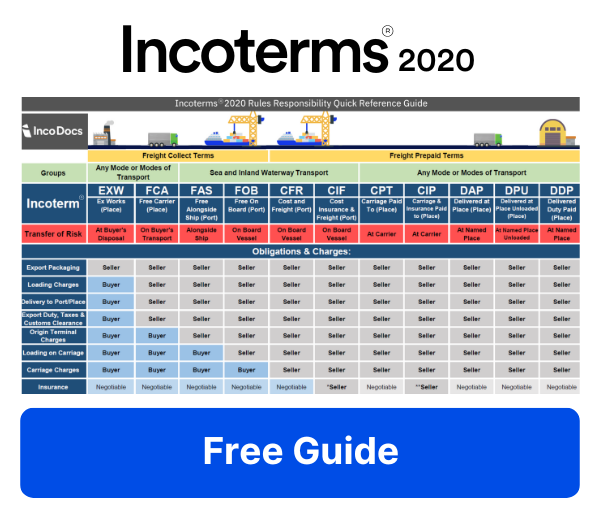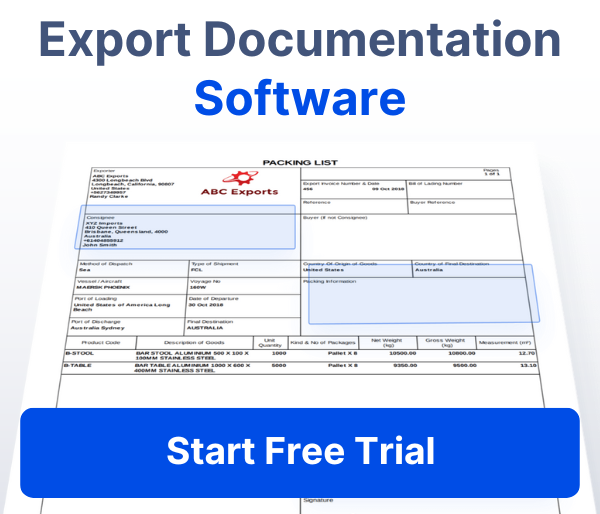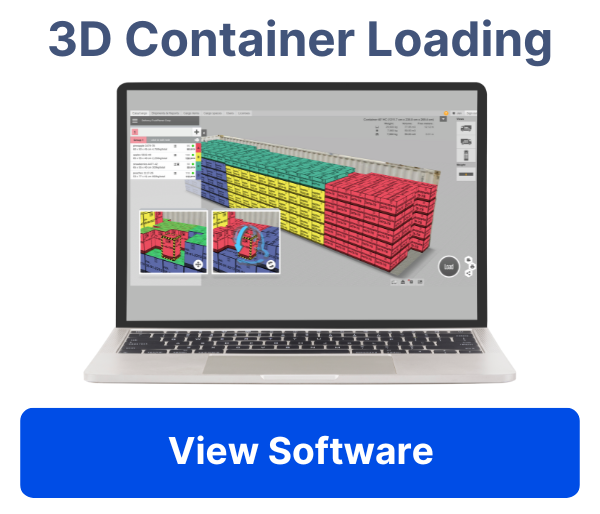The FCA Incoterm helps sellers transfer responsibility to buyers at a specific location. This point is usually in the seller’s country before the goods are exported. It is one of the 11 Incoterms created by the International Chamber of Commerce (ICC) to simplify global trade.
Incoterms® stands for International Commercial Terms. These rules define the roles of buyers and sellers in shipping contracts. They are accepted worldwide and ensure clear communication in trade agreements.
This guide focuses on how FCA works and its benefits for global transactions.
What does FCA mean in shipping terms?
FCA stands for “Free Carrier”. This rule works across all transport types, sea and inland waterway transport, air, road, rail and multimodal transport. It provides flexibility for different shipping needs.
Under FCA the seller delivers goods to a specific location that has been nominiated by the buyer in advance. This is often in the seller’s country. At that point, the buyer takes on all costs and risks. The buyer or their freight company then arranges the transportation.
Buyer & Seller Responsibilities
| Responsibility | Seller’s Obligation | Buyer’s Obligation |
| Packaging | Seller ensures goods are securely and appropriately packed to prevent damage during transit. | None. |
| Export Clearance | Seller handles all export formalities, including licenses, inspections, and security measures. | Buyer assists the seller if additional documents or approvals are needed for export. |
| Named Place Specification | Seller ensures goods are delivered to the correct named place provided by the buyer. | Buyer clearly specifies the named place of delivery in detail (e.g. carrier or terminal name, address). |
| Carrier Coordination | None, unless agreed otherwise. | Buyer selects a reliable carrier or freight forwarder to handle the shipment. |
| Delays or Failures | Seller notifies the buyer if the goods cannot be delivered as agreed. | Buyer notifies the seller if the carrier cannot collect the goods or if transport arrangements change. |
| Delivery | Seller delivers goods to the agreed location (e.g. carrier, warehouse, terminal) within the agreed timeframe. | Buyer ensures the named place is specific and practical for the seller to deliver to. |
| Risk Transfer | Seller bears all risks until the goods are handed over at the named place. | Buyer assumes all risks once the goods are delivered to the named place. |
| Loading | Seller loads goods onto the buyer’s chosen transport if the named place is the seller’s premises. | Buyer is responsible for unloading at the final destination or any intermediate stops after delivery at the named place. |
| Documentation | Seller provides documents such as the commercial invoice, packing list, and any export certificates. | Buyer accepts the documents provided by the seller and ensure they are sufficient for customs clearance at the destination. |
| Further Transportation | The seller is responsible for arranging transportation to the specified delivery location, bearing the costs and risks up to that point only. | Buyer arranges and pays for transport from the named place to the final destination. |
| Import Clearance | None. | Buyer handles all import formalities, including duties, taxes, and regulatory compliance in the destination country. |
| Unloading | None. | Buyer pays for and manage unloading at the destination. |
| Insurance | None, but provide information if requested. | Buyer decides whether to insure the goods during transit and bear related costs. |
Advantages and Disadvantages for the buyer
When buyers take control of the shipping process, they gain flexibility but also face added responsibilities. This trade-off can work well for those with experience in managing logistics and costs. Below are the key benefits and challenges:
Advantages:
- Buyers have more control over shipping and logistics.
- They can choose their own carriers or forwarders for cost-effective and reliable options.
- The term works across all transport types, including sea and inland waterway transport, air, road, rail and multimodal transport.
- Buyers take charge of the shipment after delivery, reducing reliance on the seller.
Disadvantages:
- Buyers assume all risks once the goods are delivered to the named place.
- Damage, delays, or losses during transport become the buyer’s responsibility.
- Managing international shipping, customs, and import duties can be complex.
- Experience and careful planning are needed to handle these responsibilities effectively.
How Does FCA Influence the Landed Cost?
FCA affects the total cost of goods for both buyers and sellers. FCA divides responsibilities in a way that directly influences costs for both parties. Buyers and sellers should carefully plan each stage to avoid unexpected expenses. Each step in the process impacts the landed cost differently.
TIP: Use the IncoDocs Landed Cost Calculator to work out your landed costs, sell pricing and profit amounts for each shipment.
Export Clearance Costs
The seller handles all costs related to export clearance. This includes licenses, inspections, and export documentation. These costs are included in the seller’s pricing. For the buyer, these charges are not part of their expenses.
Packaging Costs
The seller must pack the goods for safe transport. Strong export packaging should be used to protect goods from damage during transit. This cost is part of the seller’s responsibilities and is added to the product price.
Transportation to the Named Place
The seller pays for transporting the goods to the named place. The buyer then takes over all of the additional transport costs from this point. This step clearly divides transportation costs between the seller and the buyer.
International Freight Costs
The buyer arranges and pays for freight from the named place to the final destination. This cost depends on the carrier chosen and the route. The buyer’s choice of freight forwarder or carrier will influence the final landed costs.
Import Duties and Taxes
The buyer is responsible to pay for applicable import duties, taxes, and import formalities at the country of destination. These charges vary by country. Buyers must budget for these costs as part of their landed cost.
Insurance Costs
The buyer determines whether to purchase insurance, which is optional but safeguards the goods against transit risks. If the buyer opts out of insurance, they assume responsibility for any potential damage or loss.
Unloading Charges
The buyer will pay for unloading costs and fees at the final destination. This includes equipment and labor fees. These charges can vary based on the destination and size and weight of the shipment’s packaging.
When is it best to use FCA Incoterm?

FCA works well when the buyer wants more control over transport and logistics. It is a good choice if the buyer has confidence in their own freight arrangements. Buyers who have reliable carriers or freight forwarders can often arrange better transport than the seller.
This trade term is especially useful in the following cases:
- Reliable Transportation Contacts: Buyers with trusted carriers or logistics providers can benefit from FCA. They can arrange transport efficiently and often at lower costs than relying on the seller.
- Containerized Shipments: It is ideal for containerized goods. The buyer gains control of the shipment once the goods are handed over and loaded. This reduces risks of delays caused by the seller.
- Control Over Logistics: Buyers who prefer managing timing, routes, and transport find FCA useful. It gives them the freedom to handle logistics according to their needs.
- Clear Risk Transfer: The agreement defines when risk transfers to the buyer. This clarity helps in planning insurance and managing risks.
What Is The Difference Between FCA And FOB?
The primary difference between FCA (Free Carrier) and FOB (Free On Board) lies in the point at which responsibility and risk transfer from the seller to the buyer. Read more about the difference between FCA and FOB here.
FCA (Free Carrier):
- FCA applies to all modes of transport, making it more flexible for modern logistics, including containerized shipping and multimodal transport.
- The seller fulfills their obligation when the goods are delivered to the buyer or their carrier at the named place. This location could be the seller’s premises, a terminal, or another specified point.
- If delivery occurs at the seller’s premises, the seller is responsible for loading the goods onto the buyer’s transport. If delivery occurs elsewhere, loading is the buyer’s responsibility.
FOB (Free On Board):
- FOB applies exclusively to sea or inland waterway transport.
- The seller fulfills their obligation when the goods are loaded “on board” the vessel at the port of shipment. The buyer assumes responsibility and risk at this point.
- The seller covers all costs and risks up to the point where the goods are loaded onto the vessel, including terminal charges.
Does FCA Include Customs Clearance?
In a FCA agreement, the seller is responsible for the export customs clearance in the country of export, whereas the buyer is responsible for the import customs clearance process in the country of import.
Seller’s Responsibility
- Preparing and submitting export documentation in the country of export.
- Paying any applicable export-related duties, fees or taxes.
- Ensuring the goods comply with the export regulations of their country.
Buyer’s Responsibility
- Import customs clearance processes in the country of import.
- Providing all required documentation for the shipment to be submitted and cleared through customs in the country of import.
- Paying applicable import duties, taxes and fees.
- Ensuring compliance with the import regulations of the destination country.
This is general information for guidance purposes only. IncoSolutions Pty Ltd is not responsible for these contents nor do the contents listed above contain all details. For a full and complete description refer to the full version of Incoterms®2020 by the International Chamber of Commerce at the ICC website.
